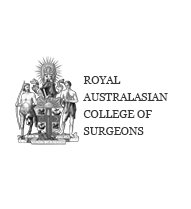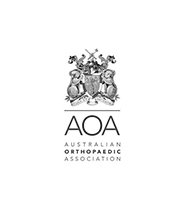Calcific Tendinitis
Calcific tendinosis is the abnormal deposition of calcium in the tendons of the rotator cuff muscles. The rotator cuff muscles are a group of muscles that surround and stabilize the shoulder joint. When tendon cells die, scar tissue is normally formed. However, sometimes the body responds by depositing calcium. The calcium can be very irritating to the local tendon causing extreme pain. The calcium can also create a lump in the tendon that limits shoulder movement. These calcium deposits are visible on X-rays and are occasionally present without pain.
Calcific tendinosis normally affects people in the age group of 30-50 years. Though an exact cause is not established, it has been attributed to aging, wear and tear, increased pressure on the tendon, and inadequate oxygen supply.
Symptoms include intense pain on the outside of the shoulder that may affect sleep, cause stiffness and difficulty with overhead activities.
Calcific tendinosis normally passes through 3 stages. In the initial stage calcium deposits are not visibly formed and there is no pain. This is followed by a painful calcific stage and finally a stage where the calcium is resorbed.
Diagnosis of calcific tendinosis requires a review your symptoms, medical history and a physical examination. The calcium deposits can usually be seen on X-rays, ultrasound and MRI scans.
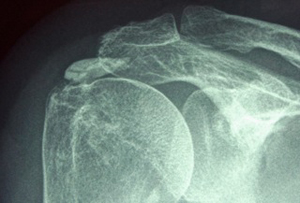 |
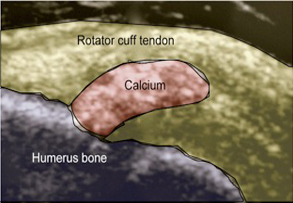 |
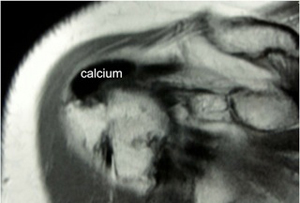 |
Calcific tendinosis usually resolves spontaneously but may have a prolonged course (up to 10 years). Treatment depends on the severity of symptoms, the phase of the disease and the size of the deposits. Your doctor may prescribe analgesics and anti-
inflammatory medications to control pain and inflammation. Severe symptoms may be reduced by steroid injections and needling of the deposits.
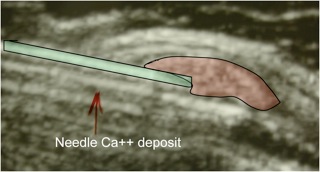
Calcium lump being needled under ultrasound guidance
The deposits may require removal from the tendon using a minimally invasive arthroscopic procedure. This is generally reserved for lesions that have not responded to corticosteroid and aspiration, however some patients elect for surgery as a more definitive solution.
Arthroscopic images
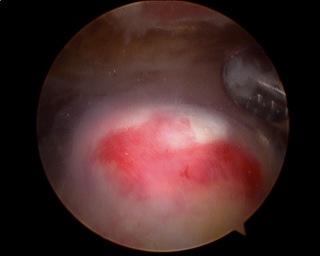 |
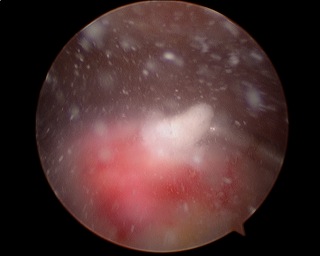 |
| Inflamed calcium Lump in Rotator Cuff Tendon | Calcium being liberated from Tendon with probe |
The arthroscopic procedure takes approximately one hour. Patients usually spend one night in hospital. The principal risk from the surgery is stiffness (frozen shoulder) which eventually resolves but can be as disabling as the calcific tendinosis. To avoid stiffness, analgesia is maximized and early range of motion exercises are commenced the next morning with a physiotherapist. Sling immobilization is discouraged. Other risks include but are not limited to infection, skin nerve injury and incomplete pain relief. Driving can usually be commenced 1-2 weeks after surgery but complete recovery can take 4-6 months. Recurrence of the calcium lump in the shoulder is exceedingly rare but it can occur in the other shoulder.

